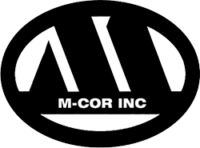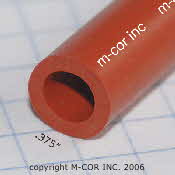Teflon® Encapsulated O-Rings: Operational Advantages and Disadvantages in Low Pressure and Vacuum Pressure Applications
Teflon® encapsulated O-rings are widely used in industries that demand high-performance seals combining chemical resistance and mechanical durability. These O-rings consist of an elastomeric core, typically made of rubber, encased within a Teflon® (FEP or PFA) sheath. This design balances the flexibility of rubber with the durability and chemical resistance of Teflon®. However, their performance characteristics vary significantly based on application parameters such as pressure, temperature, and cycling. To fully understand their suitability for specific applications, it is essential to examine their advantages and disadvantages in low-pressure and vacuum environments.
Advantages in Low-Pressure Applications
To begin with, Teflon® encapsulated O-rings offer several distinct advantages in low-pressure applications:
Chemical Resistance:
The Teflon® sheath provides exceptional resistance to a wide range of chemicals, including aggressive solvents, acids, and bases. Consequently, these O-rings perform reliably in environments with significant chemical exposure.
Low Friction:
Another benefit is Teflon®’s inherently low coefficient of friction. This property minimizes wear and extends seal life, particularly in dynamic applications where the O-ring moves against a surface.
Flexibility at Low Pressures:
In addition, the elastomeric core maintains enough flexibility to conform to mating surfaces under low pressures, ensuring an effective seal. For applications requiring even greater adaptability, hollow-core designs enhance the O-ring’s ability to compress under minimal force, thereby reducing the risk of leaks.
Disadvantages in Low-Pressure Applications
Despite these benefits, there are certain drawbacks to using Teflon® encapsulated O-rings in low-pressure applications:
Seal Conformity:
The encapsulation thickness and the core’s durometer (hardness) are critical. If the Teflon® layer is too thick, it can hinder the O-ring’s ability to deform adequately at low pressures, potentially compromising the seal.
Compression Set:
Over time, prolonged exposure to low pressures can cause the elastomeric core to develop a compression set. As a result, the sealing effectiveness may diminish, particularly in applications with minimal cycling.
Advantages in Vacuum Applications
When it comes to vacuum environments, Teflon® encapsulated O-rings also demonstrate several significant advantages:
Outgassing Prevention:
First and foremost, the Teflon® sheath acts as a barrier that prevents the elastomeric core from outgassing. This feature is crucial in high-vacuum settings, particularly in industries such as semiconductors and aerospace.
Thermal Stability:
Moreover, Teflon® remains stable across an impressive temperature range (-200°C to +260°C), ensuring reliable performance even in vacuum systems subject to extreme thermal cycling.
Leakage Resistance:
Furthermore, the combination of a resilient rubber core and a durable Teflon® sheath provides a gas-tight seal, which is essential for maintaining vacuum integrity over extended periods.
Disadvantages in Vacuum Applications
On the other hand, vacuum applications pose unique challenges that must be addressed:
Core Material Selection:
Selecting the appropriate core material is vital. For vacuum environments, high-durometer cores or specialized materials such as FKM or FFKM are often preferred. These materials resist collapse under negative pressure, but improper selection can lead to performance issues.
Encapsulation Thickness:
Additionally, the thickness of the Teflon® sheath is a critical design factor. While a thicker encapsulation enhances chemical resistance, it also reduces flexibility. Consequently, sealing gaps may occur under high vacuum due to insufficient compression.
Temperature Cycling:
Repeated temperature cycling in vacuum environments can also introduce differential expansion between the core and encapsulation. This mismatch may eventually lead to delamination or cracking, particularly in demanding applications.
Core and Encapsulation Design Considerations
To ensure optimal performance, several design factors must be carefully evaluated:
Durometer:
The durometer of the elastomeric core significantly impacts the O-ring’s performance. Lower-durometer cores provide greater flexibility, making them ideal for low-pressure applications. However, they may deform excessively under cycling or higher pressures. Conversely, higher-durometer cores maintain their shape but may reduce sealing efficiency in low-pressure environments.
Hollow vs. Solid Core:
Hollow Core: Offers enhanced flexibility, which is beneficial in low-pressure applications. However, it may collapse under vacuum or high-pressure cycling.
Solid Core: Provides superior resistance to deformation, making it the preferred choice for vacuum and high-pressure applications.
Encapsulation Thickness:
Striking the right balance in encapsulation thickness is essential. A thicker Teflon® sheath improves chemical resistance but can limit the O-ring’s flexibility and compression, especially in low-pressure or vacuum environments.
Temperature and Cycling Performance
Teflon® encapsulated O-rings excel in managing temperature extremes, but certain limitations should be noted:
Thermal Cycling:
Repeated transitions between high and low temperatures can induce stresses at the interface of the core and encapsulation, potentially leading to failures.
Core Resilience: Elastomers such as silicone, EPDM, or FKM exhibit varying responses to thermal cycling. Therefore, choosing the right core material for the application’s temperature range is essential to ensure long-term performance.
Conclusion
Teflon® encapsulated O-rings offer a unique combination of chemical resistance, thermal stability, and mechanical durability, making them highly versatile sealing solutions. Their advantages in low-pressure and vacuum applications are undeniable, yet they come with specific design challenges that must be carefully addressed. By selecting the appropriate core material, durometer, encapsulation thickness, and design features, these O-rings can meet the demands of critical industries such as biologics, semiconductors, and aerospace. Through thoughtful design and application, they deliver reliable performance in some of the most demanding environments.



